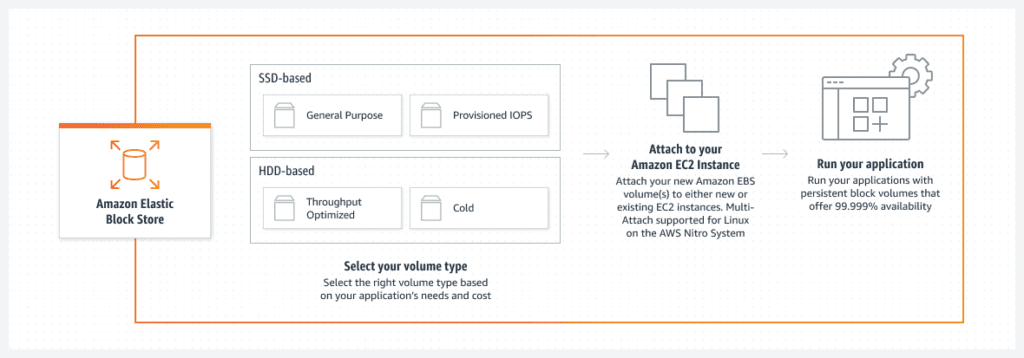Amazon Web Services (AWS) offers a wide range of services that cater to various cloud computing needs, and one of the fundamental building blocks of AWS infrastructure is Elastic Block Store (EBS). In this blog post, we’ll take a deep dive into AWS EBS, exploring its significance, features, use cases, and best practices.

What is AWS EBS?
AWS Elastic Block Store (EBS) is a scalable block storage service designed for use with Amazon EC2 instances. It provides highly available, durable, and persistent block-level storage that you can attach to your EC2 instances. EBS volumes are like virtual hard drives that allow you to store data, install operating systems, and run applications.
Key Features of AWS EBS
1. Data Durability
- EBS volumes are designed for high durability. Data is automatically replicated within an Availability Zone (AZ) to protect against component failures.
2. Snapshots
- You can create point-in-time snapshots of your EBS volumes, which are stored in Amazon S3. Snapshots serve as backups and can be used to create new volumes or restore data.
3. Volume Types
- EBS offers various volume types optimized for different workloads, including General Purpose (SSD), Provisioned IOPS (SSD), Throughput Optimized (HDD), and Cold HDD.
4. Easy Attachment and Detachment
- EBS volumes can be easily attached to and detached from EC2 instances, allowing you to move storage between instances as needed.
5. Encryption
- EBS volumes can be encrypted to ensure the security of your data at rest.
6. High Availability
- You can use Multi-Attach for Provisioned IOPS (io2) volumes to attach a single volume to multiple EC2 instances, providing high availability for shared data.
Use cases:
Build your SAN in the cloud for I/O-intensive applications
Migrate mid-range, on-premises storage area network (SAN) workloads to the cloud. Attach high-performance and high-availability block storage for mission-critical applications.
Run relational or NoSQL databases.
Deploy and scale your choice of databases, including SAP HANA, Oracle, Microsoft SQL Server, PostgreSQL, MySQL, Cassandra, and MongoDB.
Right-size your big data analytics engines.
Easily resize clusters for big data analytics engines, such as Hadoop and Spark, and freely detach and reattach volumes.

